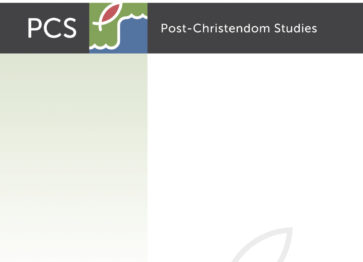In the lead article in the premiere issue of Post-Christendom Studies, David Bebbington, Professor of History at the University of Stirling, argues that the popularity of American Evangelicalism relative to its British counterpart slowed the rise of secularization and post-Christendom in American culture. Evangelicalism in America and Britain were homogenous movements during the nineteenth and the early twentieth centuries, according to David Bebbington. They shared common theological commitments and vision of Christian spirituality. They also enjoyed being the mainstream form of Christianity in their respective societies. Only in the twentieth century did their common histories depart. What are the sources for the divergence? The rise of dispensationalism, holiness movements such as the Nazarene church, Pentecostalism, and especially Fundamentalism. The emergence and, in varying degrees, the coalescence of these factors led to a decisive exclusion of Evangelicals from the established churches in Britain in the early twentieth century. Evangelicalism in Britain went from the mainstream to the margins, and unlike its American counterpart, lost its popular appeal as well. In America, although excluded from mainstream churches and church educational institutions (like its British counterpart) it remained a popular type of American Christianity. The American Evangelicals, in others words, were able to establish popularity in the wider culture more successfully than their British counterparts.
What does this story of British and American Evangelicalism have to do with post-Christendom?
Post-Christendom is the new reality for British, Canadian, and American Christians. The popularity of American Evangelicalism only slowed the pace of the secularization of the public sphere in American society. Christendom has lingered on longer in America than in Canada and Britain due to the popular appeal of evangelical Christianity. America, Britain, and Canada, nevertheless, are on the same pathway to post-Christendom. American Evangelicals, therefore, share not only a common history but also a similar future of marginalization in a culture that is increasingly (and ironically) more secular, multicultural, and religiously plural.
Bebbington’s comparative history of British and American Evangelicalism also helps understand Canadian Evangelicalism. Like its British counterpart, Canadian Evangelicalism in the twentieth century was neither numerically nor culturally dominant like its American form. In terms of cultural location and prominence, Canadian Evangelicalism shares more in common with British than American Evangelicalism. The theological and ecclesial ethos of Canadian Evangelicalism, however, shares more in common with American than the British form of the movement.1
Adapting to cultural marginality has become part of the DNA of British and Canadian Evangelicalism. Exclusion from mainstream and elite cultural is familiar to American Evangelicalism, but how will it respond to its loss of popular appeal? As American society becomes increasingly post-Christian and Christianity becomes more marginal, will American Evangelicals be able to learn from their British and Canadian forerunners?
Endnotes
1. For the cultural affinities between Canadian and American Evangelicalism, see Sam Reimer, Evangelicals and the Continental Divide: The Evangelical Subculture in Canada and the United States (Montreal and Kingston: McGill-Queen’s University Press, 2003).
*The views and opinions expressed in this article are those of the author and do not necessarily reflect the official policy or position of McMaster Divinity College or the Centre for Post-Christendom Studies.*




